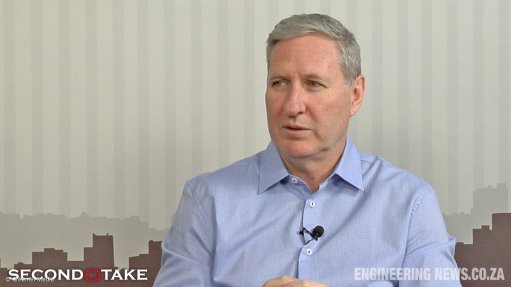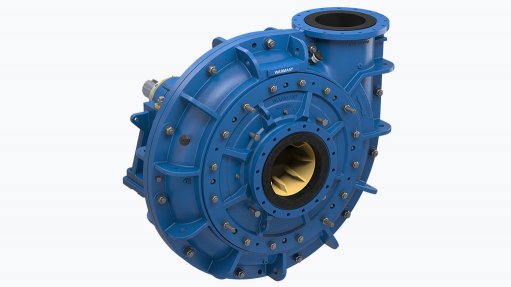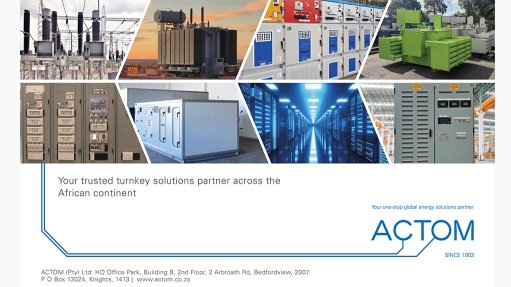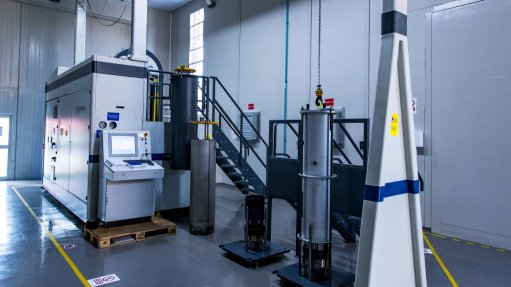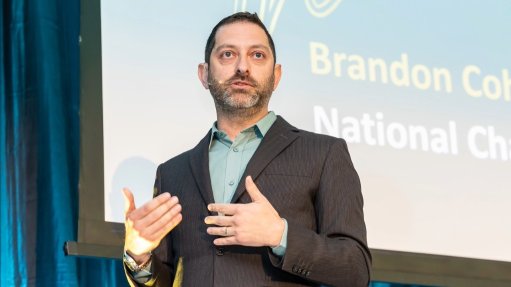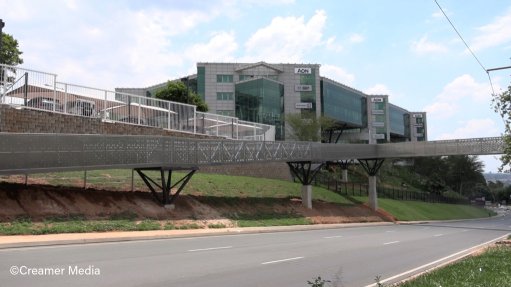New initiative doubles rail capacity on the Coal Line

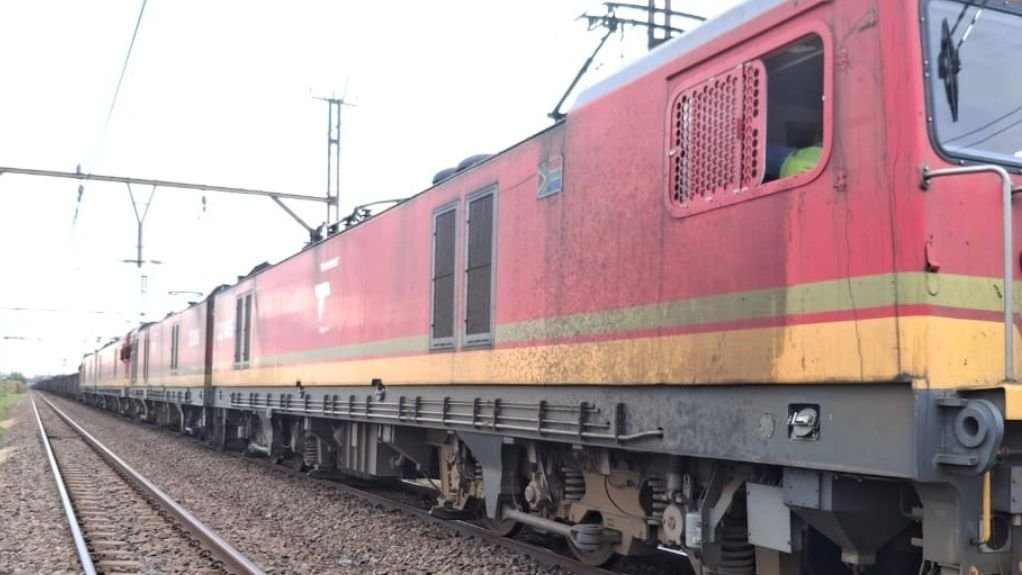
DOUBLE CAPACITY Transnet’s continuous improvement team recently launched a 160-wagon train initiative on the North Corridor
State-owned rail freight company Transnet’s continuous improvement team recently launched a 160-wagon train initiative on the North Corridor to improve slot utilisation and double network capacity, as well as reduce labour costs and running times at intermediary stations using bypass methodology.
The team sought to determine whether it could efficiently transport 160 wagons on the general freight business (GFB) flow route between Richards Bay and Saaiwater, on the North Corridor, while meeting the aforementioned objectives.
The test, conducted on February 10, 2025, marked a first-of-its-kind endeavour for the well-utilised GFB flow route.
The route, which primarily services coal freight for export and domestic use, has historically operated trains carrying a maximum of 80 wagons, explains Transnet Freight Rail (TFR) Coal Business Unit GM Theo Johnson.
This capacity was once sufficient but increasing operational challenges – particularly cable theft – have disrupted the system.
“This threw our rail system into imbalance, requiring constant service relief. While our security teams worked tirelessly to reduce incidents, we needed to ensure our pit-to-port customers remained satisfied,” he tells Engineering News.
Clients along the corridor include coal producers Exxaro, Thungela Resources, Seriti Resources and State-owned power utility Eskom.
“TFR is the leading freight transporter of bulk commodities for the domestic and export markets, so we are finding new ways to better service our customers,” Johnson says.
For this reason, the 160-wagon concept was formally adopted in July 2024, following a feasibility study by the train designs technology management, operations management and continuous improvement teams. The plan prioritised capacity expansion to address growing backlogs on the GFB flow.
“However, the study revealed that there were infrastructure limitations. Some yards along the route couldn’t accommodate 160 wagons,” Johnson adds.
This led to the team’s adapting the strategy to include bypass options, focusing on loop-line analysis between Ermelo and Saaiwater for route deviation.
Once the yards to be bypassed were identified, attention shifted to locomotive configuration.
“The minimum configuration needed to operate a train of this length is two 22E locomotives, but to support resource balancing on the return leg, we concluded that four 22E class locomotives would be required,” he elaborates.
An additional telemeter was also installed to help manage and coordinate the longer train.
Operational Hurdles
Once technical preparations were complete, only a few obstacles remained.
“Prior to departure, Richards Bay was affected by a long-standing integrated train plan delay, owing to a Bhizolo power outage, which disrupted the signalling system into the Richards Bay Skoonkaai yard, along the GFB flow.
“On the section between Ermelo and Saaiwater, two incidents involving hanging contact wires caused the lead locomotive to register a pantograph – the hinged, roof-mounted device that collects electric current from overhead wires – malfunction,” he notes.
As such, additional speed restrictions required close monitoring to ensure safe passage.
The empty wagons, pulled by four locomotives, completed the journey in 17 hours at an average speed of 60 km/h. Johnson confirms that the team achieved nearly all its operational targets, including reduced cycle times.
The continuous improvement team told Engineering News that it was satisfied with the outcome, which aligned with Transnet’s broader objective to improve operations.
Consequently, a second test-run followed, from Richards Bay to Ermelo, with a split of two 80-wagon sets on arrival.
Johnson adds that there are plans to implement this configuration on a regular basis.
“The project will move into the implementation phase once the Railway Safety Regulator grants approval to officially run the train. We plan to start with one train a week and gradually increase the frequency.
“Transnet looks forward to the regulator’s feedback and aims to improve the weekly flow of loaded wagons to Richards Bay. A key milestone will also be completing the necessary training and certification for train crews,” he concludes.
Article Enquiry
Email Article
Save Article
Feedback
To advertise email advertising@creamermedia.co.za or click here
Comments
Announcements
What's On
Subscribe to improve your user experience...
Option 1 (equivalent of R125 a month):
Receive a weekly copy of Creamer Media's Engineering News & Mining Weekly magazine
(print copy for those in South Africa and e-magazine for those outside of South Africa)
Receive daily email newsletters
Access to full search results
Access archive of magazine back copies
Access to Projects in Progress
Access to ONE Research Report of your choice in PDF format
Option 2 (equivalent of R375 a month):
All benefits from Option 1
PLUS
Access to Creamer Media's Research Channel Africa for ALL Research Reports, in PDF format, on various industrial and mining sectors
including Electricity; Water; Energy Transition; Hydrogen; Roads, Rail and Ports; Coal; Gold; Platinum; Battery Metals; etc.
Already a subscriber?
Forgotten your password?
Receive weekly copy of Creamer Media's Engineering News & Mining Weekly magazine (print copy for those in South Africa and e-magazine for those outside of South Africa)
➕
Recieve daily email newsletters
➕
Access to full search results
➕
Access archive of magazine back copies
➕
Access to Projects in Progress
➕
Access to ONE Research Report of your choice in PDF format
RESEARCH CHANNEL AFRICA
R4500 (equivalent of R375 a month)
SUBSCRIBEAll benefits from Option 1
➕
Access to Creamer Media's Research Channel Africa for ALL Research Reports on various industrial and mining sectors, in PDF format, including on:
Electricity
➕
Water
➕
Energy Transition
➕
Hydrogen
➕
Roads, Rail and Ports
➕
Coal
➕
Gold
➕
Platinum
➕
Battery Metals
➕
etc.
Receive all benefits from Option 1 or Option 2 delivered to numerous people at your company
➕
Multiple User names and Passwords for simultaneous log-ins
➕
Intranet integration access to all in your organisation








